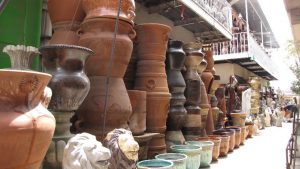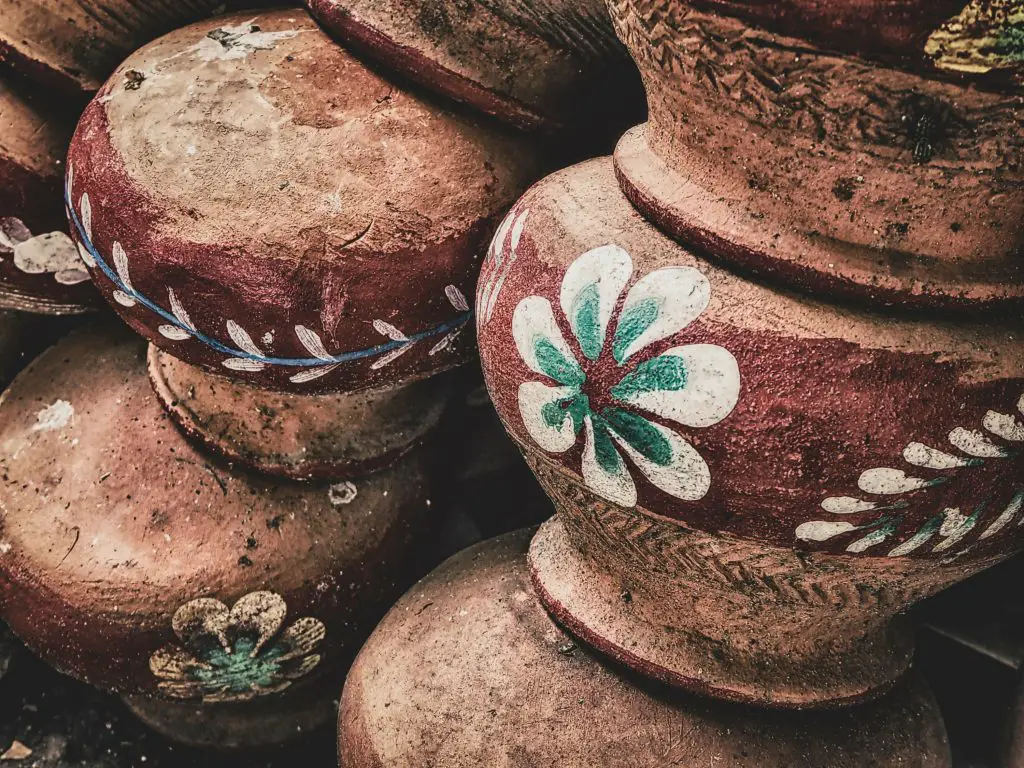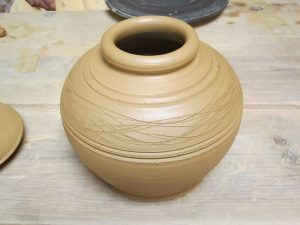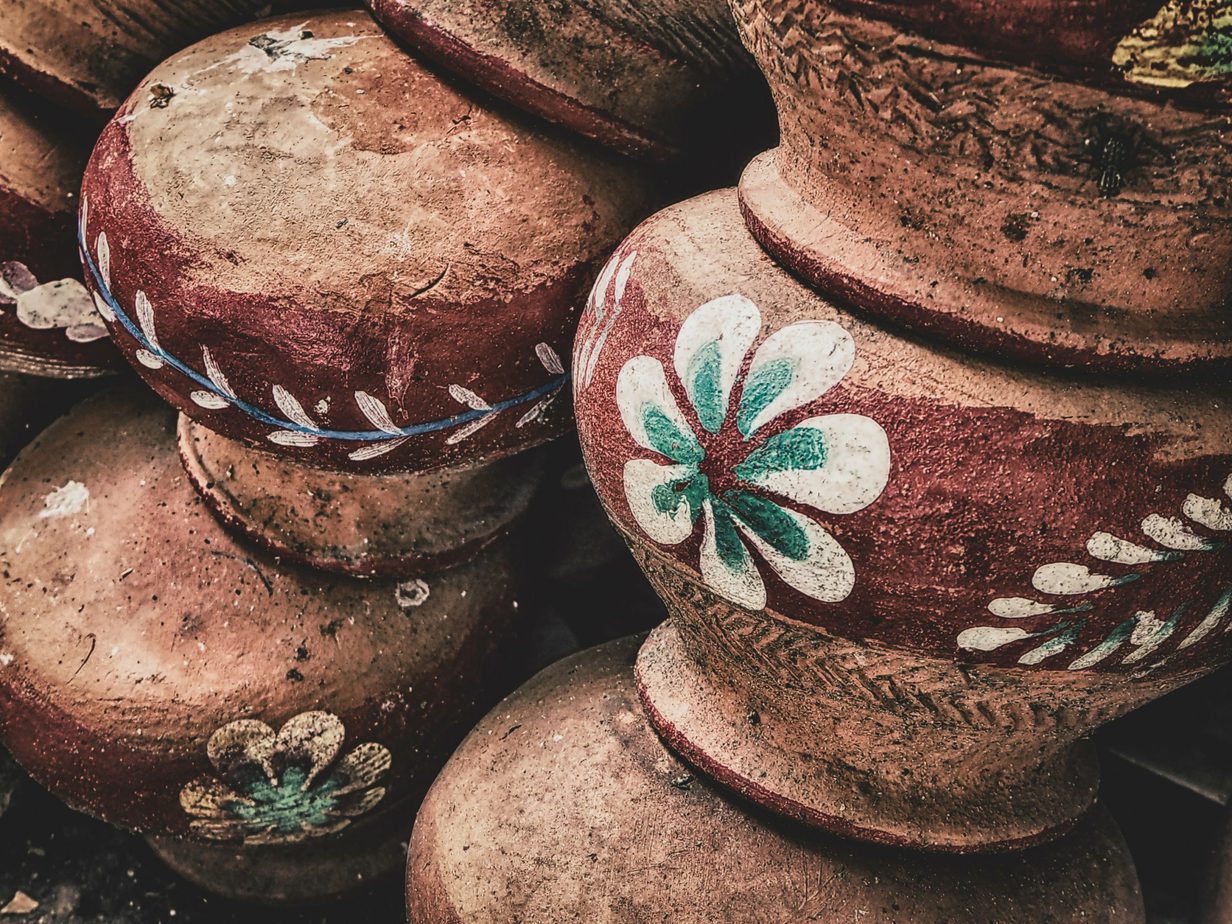Welcome back to my blog. Today, I will be talking about Mexican clay. I know you might have seen something relating to Mexican pottery or “self-hardening pottery” as others will call it. You don’t need a master’s degree to know Mexican clay is from the great country of Mexico. Self-hardening clay, also known as air-dried or non-firing clay, is a direct modeling material that cures naturally and does not require mold making and casting to achieve a finished piece. Besides, this modeling clay does not need to be fired in a kiln.

TYPES OF MEXICAN CLAY
There are two basic types of Mexican/self-hardening clay. The first type, Claystone, this is known to work like Plastilina and is usually used over an internal armature for support. Claystone can be worked indefinitely while moist.
The second type of Mexican clay is Boneware. Boneware is used for solid, direct modeling that in essence will be supported by its bulk. Boneware will remain soft and pliable as long as it is moistened with water and overlaid with a damp cloth when not in use. Boneware contains a natural hardener, but not fiber, to reduce shrinkage and will generally feel and react more like ceramic clay to the touch and in workability.
Most pieces made from Mexican clay are for display only; that is, they cannot be used to sculpt functional pieces and should not be left out in the elements. They are porous and cannot hold liquids unless its inside surface has been thoroughly sealed. After the finished piece has air dried and been sealed, it can be decorated for display by using a variety of paints, stains or dyes.
HISTORY OF MEXICAN POTTERY
Before we go deep, let’s talk about the history of Mexican pottery.
 The native people of Mexico had a long tradition of making pottery. Mexico, as a country, is known for its significance in Puebla (City of Tiles). According to Wikipedia, Ceramics in Mexico date back thousands of years before the Pre-Columbian period, when ceramic arts and pottery crafts developed with the first advanced civilizations and cultures of Mesoamerica. With one exception, pre-Hispanic wares were not glazed, but rather burnished and painted with colored fine clay slips. The potter’s wheel was unknown as well; pieces were shaped by molding, coiling and other methods. With the arrival of the Spaniards, the contact between these two traditions resulted in exquisite new styles, the Spaniards introducing the wheel and tin-based glaze and the native Mexicans providing skilled labor and ingenuity. It is believed that the particular techniques for making this type of Majolica pottery were introduced in Puebla by immigrants from Talavera de la Reina, Spain.
The native people of Mexico had a long tradition of making pottery. Mexico, as a country, is known for its significance in Puebla (City of Tiles). According to Wikipedia, Ceramics in Mexico date back thousands of years before the Pre-Columbian period, when ceramic arts and pottery crafts developed with the first advanced civilizations and cultures of Mesoamerica. With one exception, pre-Hispanic wares were not glazed, but rather burnished and painted with colored fine clay slips. The potter’s wheel was unknown as well; pieces were shaped by molding, coiling and other methods. With the arrival of the Spaniards, the contact between these two traditions resulted in exquisite new styles, the Spaniards introducing the wheel and tin-based glaze and the native Mexicans providing skilled labor and ingenuity. It is believed that the particular techniques for making this type of Majolica pottery were introduced in Puebla by immigrants from Talavera de la Reina, Spain.
In 1653 a potter’s guild was formed and ordinances were laid down-regulating the production of Talavera. Between 1650 and 1750 the production of Talavera was at its height. Originally, Talavera was white and blue. In the 18th Century, new colors were introduced and green, orange and yellow began to be used.
POTTERY PRODUCTION IN MEXICO
According to Wikipedia, most practices art in Mexico is ceramics. Shapes and function of the pieces vary from simple flat comals, used for making tortillas to elaborate sculptures called Trees of Life. The most basic forms, such as comals, cazuelas (a type of stew pot), simple bowls and other cooking and storage ware are still based on native designs and forms. Decorative ceramics and figures are almost completely dominated by European traditions, especially in central Mexico. In some cases, there is a blending of traditions, mostly in decorative designs where indigenous elements are combined with European elements.
Most potters work in family workshops, which makes everyone participate in the pottery process. Pottery making families tend to be secretive about their practices and rarely cooperate with anyone outside the family for any aspect of the pottery-making process. Superstition may surround the process, especially firing, with potters taking care to avoid “the evil eye” of neighbors and building small shrines and performing Christian and indigenous blessings. Both men and women mold pieces, but men generally do the largest pieces (due to weight) and do the firing. Children begin to work with clay when they are about six, molding decorative elements. They usually begin molding pieces when they are about fourteen, mastering it by about eighteen. The male head of a family workshop is often of retirement age, whose primary purpose is instruction and supervision. However, many of these workshops are disappearing as elders stop working entirely and children seek other, more profitable careers.
You can find both glazed and burnished pieces in modern Mexico, with both leaded and nonleaded glazes used. Both Mexican and European pottery traditions employ decoration, which can vary from simple color changes to elaborate images and designs painted on and/or pressed into the piece. Coloring agents used to be made by the potters themselves, but today most potters use purchased chemicals.

HOW TO MAKE MEXICAN POTTERY CLAY/SELF HARDENING CLAY
Requirements
| INGREDIENTS | AMOUNT |
| Flour | Preferably 4-5 cups |
| Salt | 1-2 cups will be enough |
| Water | 1-2 cups will do justice |
Process
Step 1: Mix the flour and salt in a bowl: Scoop 4 cups of flour, and 1 cup of salt into a bowl and mix thoroughly.
 Step 2: Add Water: Gradually add water into the bowl of flour and salt and mix to form a ball
Step 2: Add Water: Gradually add water into the bowl of flour and salt and mix to form a ball
Step 3: Knead until it no longer falls apart: Knead your clay and the salted flout to together.
Step 4: Get your project done: Throw your clay on the wheel, build and carve out walls, and smoothen your project. You will need Arteza Tools to do that. You can get yours by clicking here.
Step 5: Paint and Glaze your piece
Step 6: Store any unused clay in a sealed bag in the fridge. Allow it to warm to room temperature before you use it again.
Mexican clay or otherwise known as self-hardening clay is a good alternative you can use if you feel firing your pottery is too demanding or time-consuming. Whether, it’s a cup, plate, vase or even a flower pot, Mexican pottery clay will serve you right.







